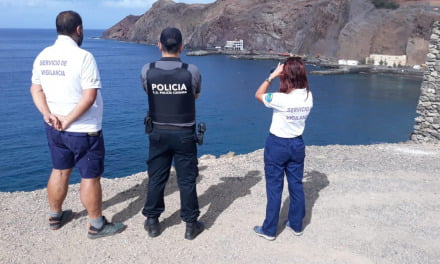The Canary Islands Government Ministry of Health this Thursday report that all Islands maintain current alert levels for the week ahead (until at least February 11) to stop the spread of coronavirus in the archipelago.
The decision takes into account indicators related to the epidemiological situation, care capacity and public health capacity, as well as the characteristics and vulnerability of the exposed susceptible population along with the possibility of adopting measures for prevention and control, including non-pharmacological measures. All Islands maintain current alert precautions, which will be reviewed and confirmed on Saturday, with the next review scheduled for next week.
Lanzarote remains at Alert Level 4 until at least February 11, with the current preventive measures remaining in force, and Gran Canaria remains at Alert Level 3.
Spokesperson, Julio Pérez, commented that contagion data on Tenerife has been “really very positive” the seven-day incidence in both the general population and those over 65 years of age has been improving, but on Gran Canaria and Lanzarote the figures are still “very high”, and have been reduced less than what is desired, but it is to be hoped the main Hospital on Lanzarote is able to continue to cope in the face of high numbers.
On El Hierro the figures are also high, but Perez pointed out that it must be taken into account that this population is much smaller, so that any variation, no matter how small in absolute values or relative value, produces significant increases in the index.
Unless there are unforeseen circumstances, the current restrictions will be maintained until the next meeting of the Canary Islands Government Council.
Regarding vaccinations, Perez pointed out that the roll out has been as planned, despite last week’s shortfall, with just over 17,000 shots having been received this week, 2,000 are from Moderna and 15,000 from Pfizer. In total 79,500 doses of vaccines have been received, of which 74,000 have been used. The Canary Islands Health Department has managed to maintain much of its vaccination schedule due to having been prudent about rolling out doses received.
 Vaccines have been provided to groups 1, residences for the elderly, and 2, first-line health personnel, explained Julio Pérez.
Vaccines have been provided to groups 1, residences for the elderly, and 2, first-line health personnel, explained Julio Pérez.
For group 1, first dose vaccination has “practically” finished and the second doses are being provided, while in group 2, 38,457 health professionals have received their first dose, around 92% of the total.
Pérez has said that the vaccination schedule has been adjusted to ensure that the second dose is available to complete inoculation of those who have already received their first injection.
The islands of Tenerife, El Hierro and Fuerteventura will maintain Alert Level 2; while La Palma and La Gomera remain at Alert Level 1. Periodic revaluations occur on Thursdays and Saturdays, with each decision to change between alert levels kept in place for at least two weeks, before being considered for a change corresponding, among other factors, to the Accumulated Incidence (AI) per 100,000 population over the preceding 14 days. The 7-day AI is used as an indicator of trend.
Epidemiological indicators released on Wednesday, by the Health Ministry, the latest daily report on the COVID-19 situation on the islands prior to today’s weekly meeting of the Governing Council, indicated a that daily case rates throughout the archipelago are still at High Risk levels (Red – above 50) with a 14-day AI of 175/100k population and a 7-day at 82/100k. The 14-day AI for over 65 year olds has also stayed within high risk parameters, at 136/100k and over 7-days 60 cases per 100,000.
ICU occupancy stands at 18%, seen also as High Risk. Occupation of non-ICU beds has a lower risk level, representing only 4.6% of the total beds available.
The number of tests coming back positivity stands at 5.9% which is still deemed as in the Risk classification, but Low Risk and traceability now stands 79%, again Low Risk.














